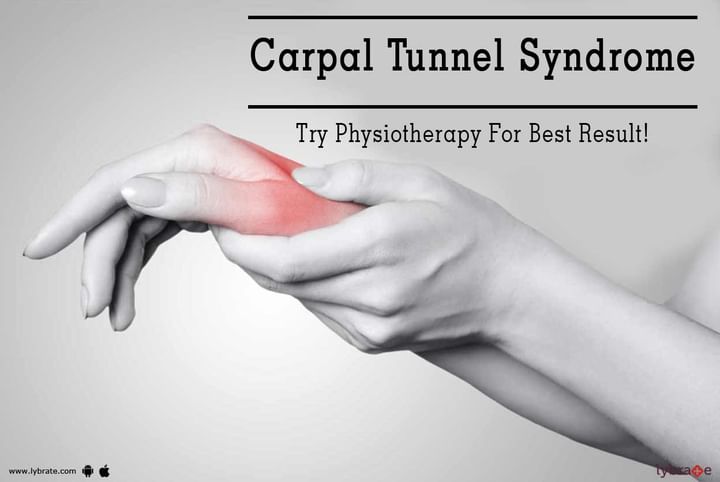Carpal Tunnel Syndrome - Try Physiotherapy For Best Result!
Carpal tunnel syndrome is a painful disorder of the hand caused by pressure on your median nerve as it runs through the carpal tunnel of the wrist. Symptoms include numbness, pins and needles, and pain (particularly at night). Anything that causes swelling inside the wrist can cause carpal tunnel syndrome, including repetitive hand movements, pregnancy and arthritis.
Cause of Carpal Tunnel Syndrome:
Carpal Tunnel Syndrome symptoms begin when the pressure inside the tunnel becomes too high. This results in your median nerve becoming compressed as it passes through the small tunnel.
The carpal tunnel pressure increase occurs when either of two things happens:
1. The tunnel space decreases, such as when the wrist swells eg after a traumatic injury, partial subluxation of the carpal bones or fracture or tenosynovitis.
2. When the contents of the tunnel (median nerve, blood vessels and tendons) enlarge.
3. Both of these situations increase the pressure on the nerve, leading to the carpal tunnel symptoms.
Symptoms of Carpal Tunnel Syndrome:
Carpal Tunnel Syndrome (CTS) sufferers will usually experience the following symptoms in their hand or fingers:
1. hand pain or aching
2. pins and needles
3. numbness especially at night with wrist flexing
4. burning
5. weakness or cramping
6. perceived swelling
The symptoms are usually worse at night and your grip will weaken as the condition progresses. Eventually you will notice muscle atrophy of the thenar (thumb) muscles and loss of hand function or clumsiness. If this sounds like you, suspect carpal tunnel syndrome.
Physiotherapy Treatment:
1. Gliding Exercises: Moving your fingers in a specified pattern of exercises may help your tendons and nerves glide more smoothly through your carpal tunnel. While there’s some evidence that gliding exercises can help relieve symptoms when used alone, these exercises appear to work better in combination with other treatments -such as splinting.
2. Graston Technique/Manual Therapy: The Graston Technique incorporates a patented form of instrument-assisted soft tissue mobilization that enables clinicians to effectively detect and treat scar tissue and restrictions that affect normal function. Manual therapy techniques such as myofascial release or Active Release Technique are hands-on techniques that release tight tendons and musculature.
3. Ultrasound: Deep, pulsed ultrasound directed at the carpal tunnel can reduce pain and numbness, and improve hand strength. Continuous superficial ultrasound doesn’t help.
4. Traction: Relief from carpal tunnel symptoms is also obtained by using a hand traction device, called C-Trac, which can be self-administered once explained by the physiotherapist.
5. Splints: Splints (braces) are the most commonly used nonsurgical treatment for carpal tunnel syndrome. Splints that immobilize the wrist in a neutral (unbent) position are most likely to relieve discomfort. An unbent wrist maximizes the size of the carpal tunnel, which reduces pressure on the median nerve, relieving your symptoms.



+1.svg)
